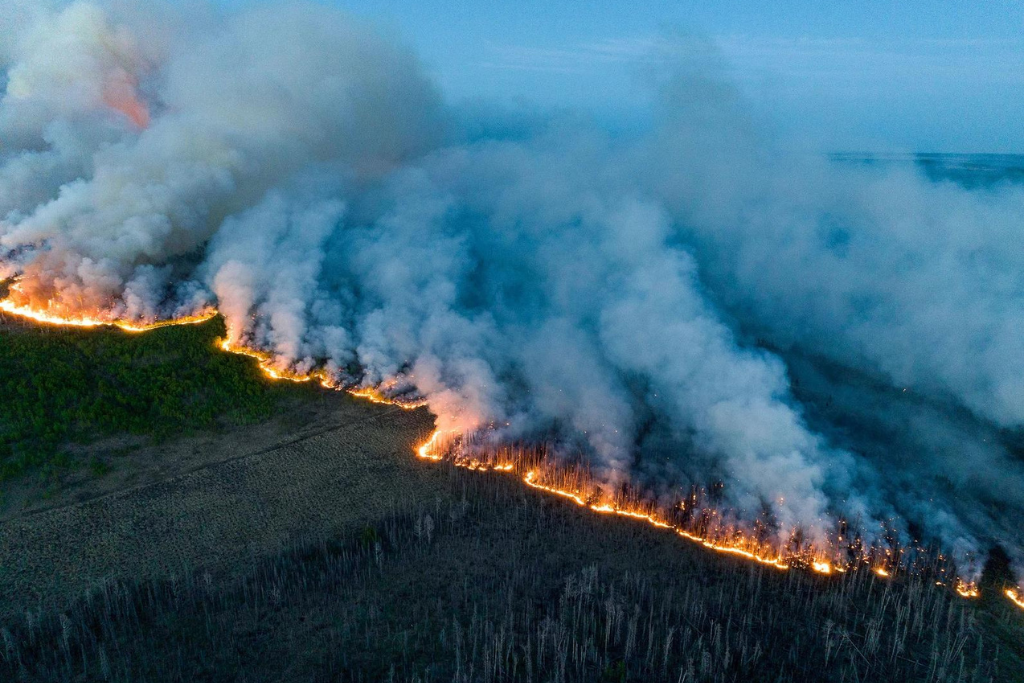Offer
Provide additional details about the offer you're running.
Provide additional details about the offer you're running.
Provide additional details about the offer you're running.

Earlier this summer, the smoke from wildfires burning in Quebec and Northern Ontario descended upon Eastern Ontario and the Eastern United States, turning skies orange and creating dangerous air quality for millions. This served as a real wake-up call to the severity of wildfires. While the smoke has cleared, wildfires still burn in the boreal forest of British Columbia, and the devastating repercussions of wildfires fueled by climate change pose severe threats to the environment and wildlife throughout Canada. Birds are among the most vulnerable creatures, which rely on stable ecosystems for survival. From respiratory distress to habitat destruction, the consequence of these catastrophic wildfires are far-reaching and demand urgent attention.
This year a whopping 13,000,784 hectares (32,125,637 acres) have already burned, more than seven times the average for this time of year. The climate crisis exacerbates wildfire conditions, leading to more frequent and intense blazes across Canada's vast forests and grasslands. Rising temperatures, prolonged droughts, and changing precipitation patterns create ideal conditions for wildfires to ignite and spread rapidly, threatening humans and wildlife.
One of the biggest threats wildfires pose to birds is the devastation of their habitats. The wildfires destroy nesting sites, foraging areas, and shelter, leaving birds with limited resources to survive and reproduce. Wildfires are a natural part of the ecosystem which means to some extent, birds are accustomed to them. However, as fires burn bigger, hotter, and more frequently, habitats don't have enough time to regenerate before burning again, erasing the habitats the birds rely on. Habitat loss can force birds to seek new territories, increasing competition and potential conflicts with other species.
When wildfires strike during migration and nesting season, as we saw this year, it leaves a difficult decision for birds. The toxic smoke can cause interruptions to birds' navigational cues and flight patterns, resulting in delayed migration or altered flight paths. This can lead to birds arriving at their nesting grounds with diminished energy reserves or later in the breeding season. When fire strikes during the nesting season, birds must decide whether to stay in a dangerous area or move. If they abandon their nests and young, they are forced to fly to an unfamiliar area to try nesting again—which is a risky move, too, when they don't know where food or predators are.
Birds, like humans, are sensitive to air pollution. The wildfire smoke exposes them to harmful particulate matter and pollutants, leading to respiratory issues such as coughing and difficulty breathing. These health issues can, in turn, hinder their ability to fly, forage, and evade predators, leading to reduced survival rates.
When wildfires burn and scorch thousands of acres of land, it leaves a devastating wake of barren terrain. Wildfires decimate vegetation, reducing the availability of food sources such as insects, seeds, and fruits. The loss of food is harmful to the birds and can disrupt the entire food chain, affecting other wildlife dependent on them for sustenance.
Wildfires driven by climate change presents an existential threat to birds in Canada and worldwide. The destructive forces of these fires lead to habitat loss, migration and nesting issues, health risks, and food scarcity, endangering bird populations and wildlife at large. As we strive to curb climate change and its devastating consequences, collective efforts from governments, communities, and individuals are essential to safeguarding the diverse birdlife that enriches our environment. Together, we can preserve Canada's natural heritage for generations while fostering a sustainable and harmonious coexistence between humans and wildlife.
Author - By Emily Kadoke-Scantlebury
High Quality Blend